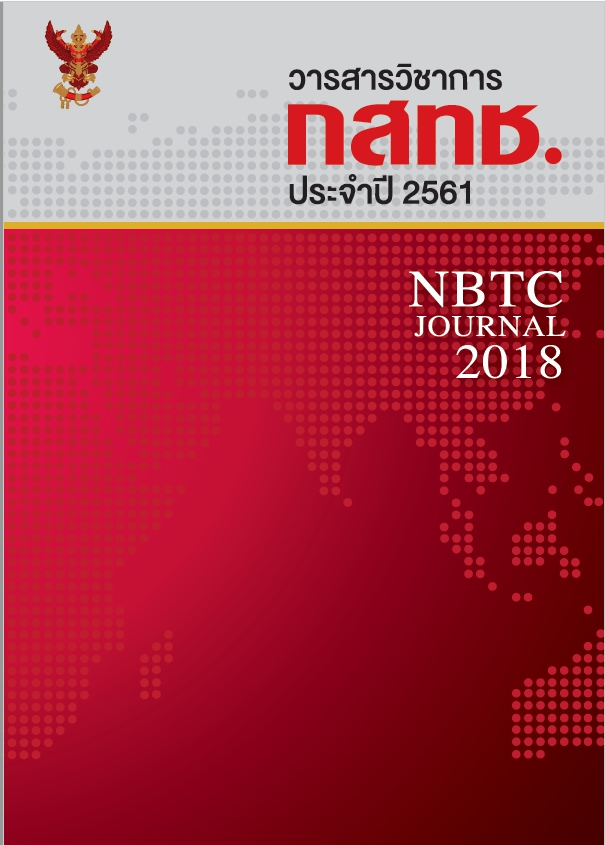The Study of Virtual Reality and Augmented Reality Technology – Impact with 5G Mobike Network
Main Article Content
Abstract
A fast growth of Virtual Reality and Augmented Reality in various vertical industries towards a soon future requires a superior Mobile Network technology in both high connection speed and low latency to make sure a very satisfy experience from users. 5G network is designed to cover these critical needs. This article addresses the technical link between Virtual Reality, Augmented Reality and 5G network technology with a consideration on the economical aspect.
Article Details
เนื้อหาหรือบทความที่ปรากฏในวารสารวิชาการ กสทช. เป็นลิขสิทธิ์ของสำนักงานคณะกรรมการกิจการกระจายเสียง กิจการโทรทัศน์ และกิจการโทรคมนาคมแห่งชาติ
(สำนักงาน กสทช.) ซึ่งสำนักงาน กสทช. ขอสงวนสิทธิ์มิให้นำเนื้อหา ข้อความ หรือบทความไม่ว่าทั้งหมดหรือส่วนหนึ่งส่วนใดไปเผยแพร่ คัดลอก หรือตีพิมพ์ซ้ำโดยเด็ดขาด
เว้นแต่ได้รับอนุญาตเป็นลายลักษณ์อักษร ทั้งนี้ ข้อความ หรือความคิดเห็นที่ปรากฏในบทความแต่ละเรื่องที่ตีพิมพ์ในวารสารนี้ เป็นความคิดเห็นของผู้เขียน
ไม่ผูกพันต่อคณะกรรมการกิจการกระจายเสียง กิจการโทรทัศน์ และกิจการโทรคมนาคมแห่งชาติ (กสทช.) และสำนักงาน กสทช. รวมทั้งกรณีหากมี
การละเมิดสิทธิ์ถือเป็นความรับผิดชอบของผู้เขียนโดยตรงไม่เกี่ยวข้องกับสำนักงาน กสทช. แต่ประการใด
References
ABI Research (2017, February). Augmented and Virtual Reality: the First Wave of 5G Killer Apps. Retrieved from
apps.pdf
AT&T Foundry Where Idea Are Made (2017). Enabling Mobile Augmented and Virtual Reality with 5G Networks.
Retrieved from https://about.att.com/content/dam/innovationblogdocs/Enabling%20Mobile%20Augmented%
and%20Virtual%20Reality%20with%205G%20Networks.pdf
China Academy of Information and Communications Technology (2017, December). Virtual Reality / Augmented
Reality White Paper (2017). Retrieved from https://www-file.huawei.com/-/media/CORPORATE/PDF/ilab/vr-ar-en.pdf
Jason Jerald, Ph.D. (2016). The VR Book: Human-Centered Design for Virtual Reality, the Association for Computer
Machinery and Morgan & Claypool Publishers
Qualcomm Technologies Inc. (2017). VR and AR pushing connectivity limits. Retrieved from
https://www.qualcomm.com/media/documents/files/vr-and-ar-pushing-connectivity-limits.pdf

